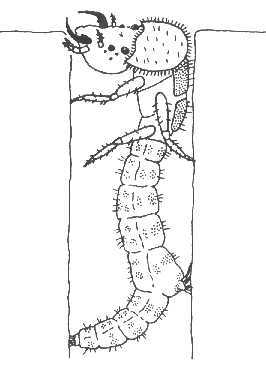Today I learned how to properly use a ratchet strap.
|
||||
|
I was talking to my mom on the phone last night and mentioned how we squatted all day, but it was hard to do so comfortably without squashing the vegetation. My opinion is that the buckets don’t help much with this, especially on slopes. I thought my mom had a great suggestion: use milking stools. It would pack down less vegetation than the buckets and might be more comfortable (I say might because I’ve never actually used a milking stool). Just a thought. In general, the two main differences between ’99 South and the main common garden (for damage assessment and herbivory) appears to be less damage in ’99 South and more ants (and less ant diversity). When doing phenology in the ’99 common garden about a week ago I noticed that the plants in the eastern-most row (those along the very edge) appeared to be more likely to have ants and (very anecdotally) seemed to have a different amount of florivery damage and browning than the rest of the garden (it’s been too long owing to my laxness in flogging and I can’t remember if it was less or more, though I am inclined to say less). Whether there actually is a difference in damage and whether this difference results from ants, edge effects, or chance remains to be seen. A few days ago when I was doing phenology in the ’99 South common garden I noted that the majority of plants in the garden had ants and that there was low variability in ant species composition – virtually all I saw where the large black ones with red heads. These ants were very aggressing and would leap off the flower head onto my stylus as I was pointing at the anthers to count them. I could practically hear them sharpening their mandibles. The northern-most row (those along the very edge) had few ants and the ants were of different species, including small black ones and light-colored ones. Interestingly, there was much more damage in this row. Are these large ants actively defending their flower heads and increasing plant fitness? Do other species of ants contribute less to the echinacea in terms of defense? Do they take more away in terms of pollen and nectar? It is not uncommon to see ants covered/dusted in pollen (I never observed this of the large black species) and I have twice seen a small black ant actively carrying pollen in its mandibles. Hey, it’s 7:47 in the morning in Minnesota. Notice the timestamp on the blog entry. How do we make the timestamp correct? If y’all like nerdy blogs, check out this one, made by a guy named Johann in Sweden: http://insect-plant.blogspot.com/ Well, we are off to bed in the men’s condo, or the ‘mando’. I am excited to use the new shower caddy that Colin assembled earlier in the day. I think Stuart’s idea about measuring anther asymmetry is definitely do-able, especially if we can do some neat batch files to process the pictures automatically. I think this technology exists, as one of Stuart’s volunteers did something similar at the CBG. |
||||
|
© 2025 The Echinacea Project - All Rights Reserved - Log in Powered by WordPress & Atahualpa |
||||


